(Drury, 1773)
Distribution : USA, recorded in some parts of Canada
Biotope : Suburbs, Gardens, Deciduous forests
Food plants Malus, Fraxinus, Prunus, Sassafras, Lindera, Liriodendron, Cephalanthus, Syringa, Betula, Ligustrum, Salix,
Voltism : univoltine, South populations can have 2 broods
Pupation : The caterpillars spin cocoons and wrap themselves in leaves, they also wrap the stem of the leaf and attach it to the branch, that way when the leaves fall of, the cocoon stays attached
Difficulty : I would say its a moderate difficulty, they need fresh food and be kept clean, they need good ventilation and lot of space in later instars.
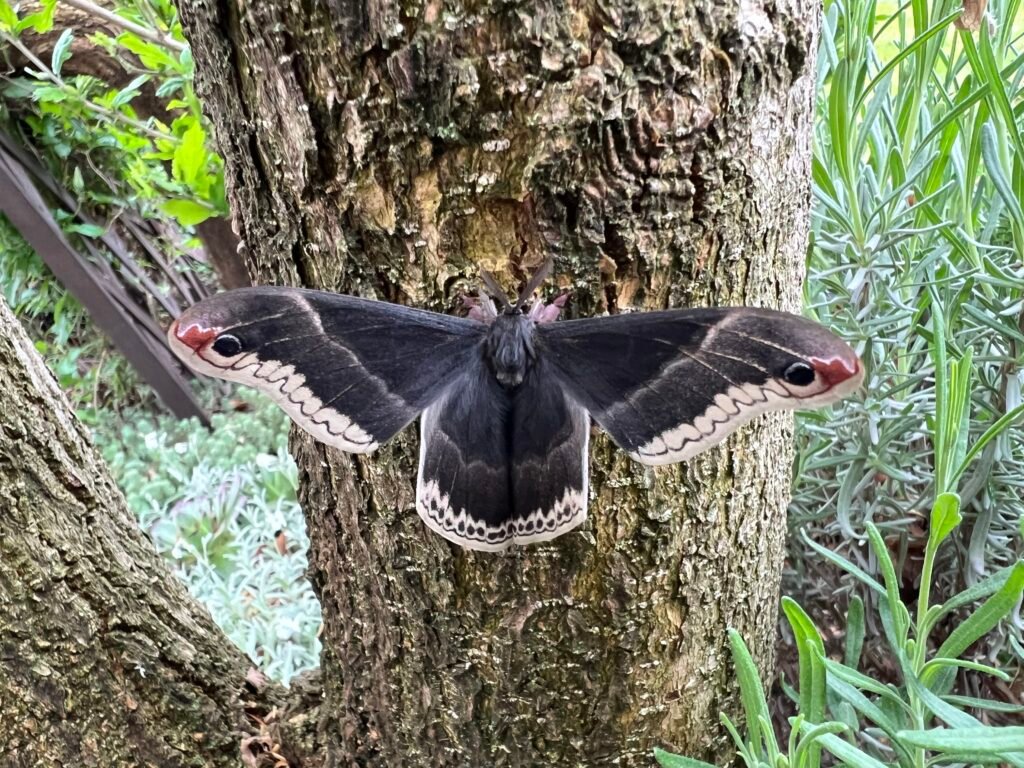
This beautiful species from the genus Callosamia is magnificent and easy to breed under the right conditions. Both the moths and the caterpillars are truly spectacular.
The principle with this species is to always keep green and fresh leaves of the host plant available throughout the rearing of the caterpillars and to regularly clean the enclosure.
The adult moths are truly beautiful, and there is a very distinct sexual dimorphism. The males are typically black in color, and the females are brown.
The males of this moth mimic the swallowtail Battus philenor for defense against predators. They utilize Batesian mimicry, where harmless and non-poisonous species adopt the coloring and appearance of poisonous species to deter predators.
Initially, the caterpillars are social and feed better together; they can even motivate other caterpillars to feed.
In the initial two instars, they can be reared together in a plastic box. It's important to be mindful of excessive condensation, which can be detrimental to the caterpillars. From the third instar, it is best to continue rearing the caterpillars in a larger mesh enclosure.
Rearing becomes most challenging in the final instars. It is essential to maintain good hygiene and fresh leaves continuously.
The eggs hatch within 7-14 days. They do not require additional humidity and can be incubated at room temperature.
L1- Freshly hatched caterpillars are very small and are black and yellow in color. In the early instars, like most social species, they grow faster and eat more when they are together with several other caterpillars. Rearing is suitable at room temperature.
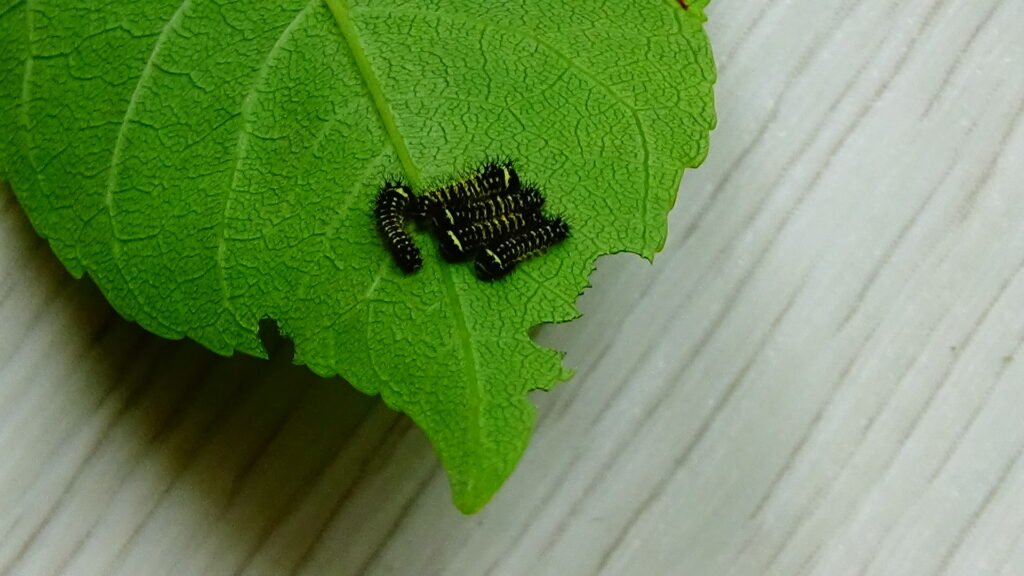
L2- The caterpillars are white and black, with yellowish tubercles visible on their bodies.
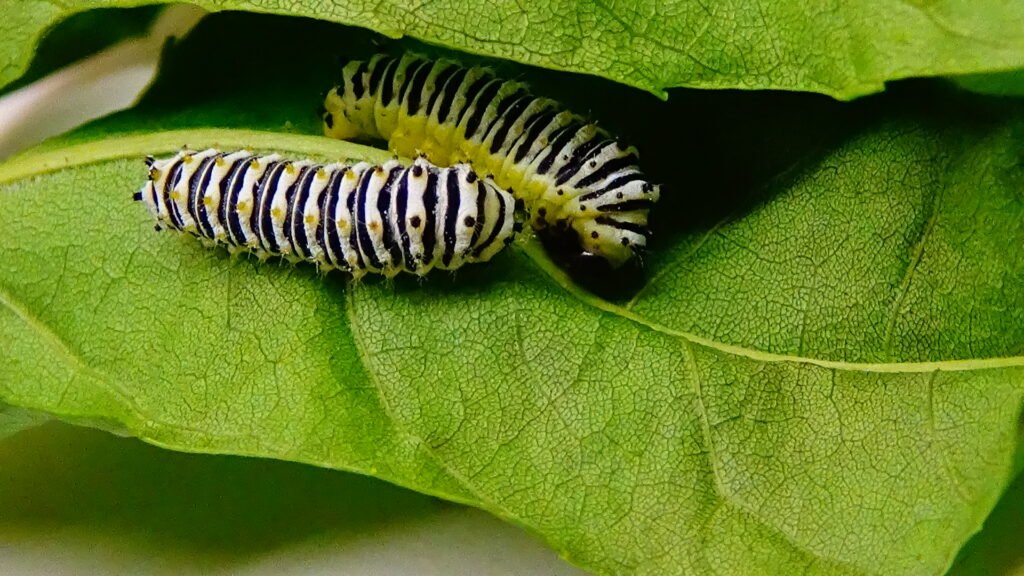
L3- in this stage, the biggest diffrence happens, they become snow white, with black tubercules all over their body, the first 4 bigger tubercules right behind their head are yellow, and so is the last tubercule near the last segment of the caterpillar.
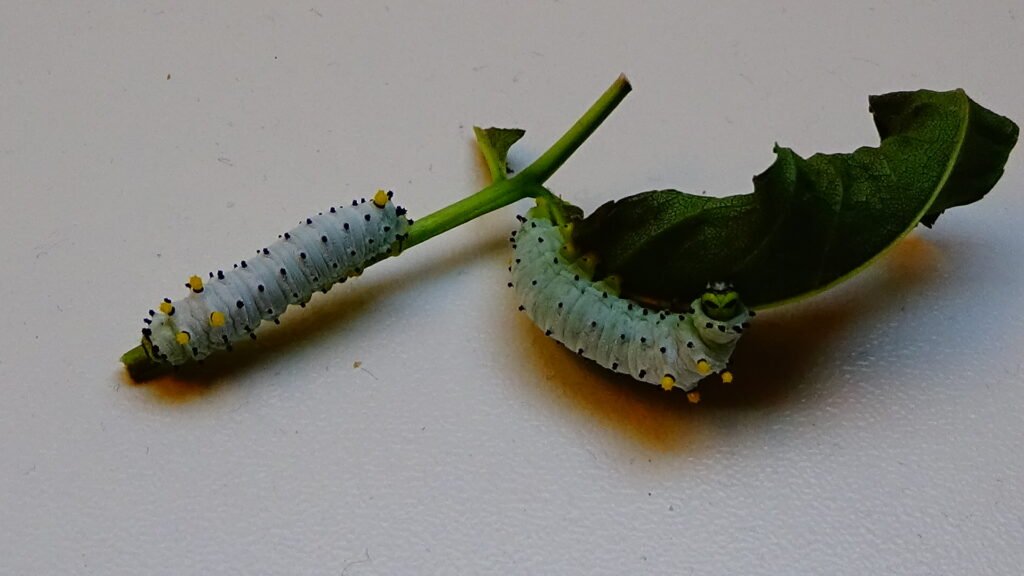
L4- The caterpillar's body is not completely white but rather a greenish color. The caterpillars slowly begin to become independent and start to spread out across the plant.

L5- They are more green-ish in color now and the 4 tubercules in front are red, the tubercule on the last segment remains the same color. They need lot of space and lot of food in this instar, the first instars are easy but the rearing gets harder as they grow.
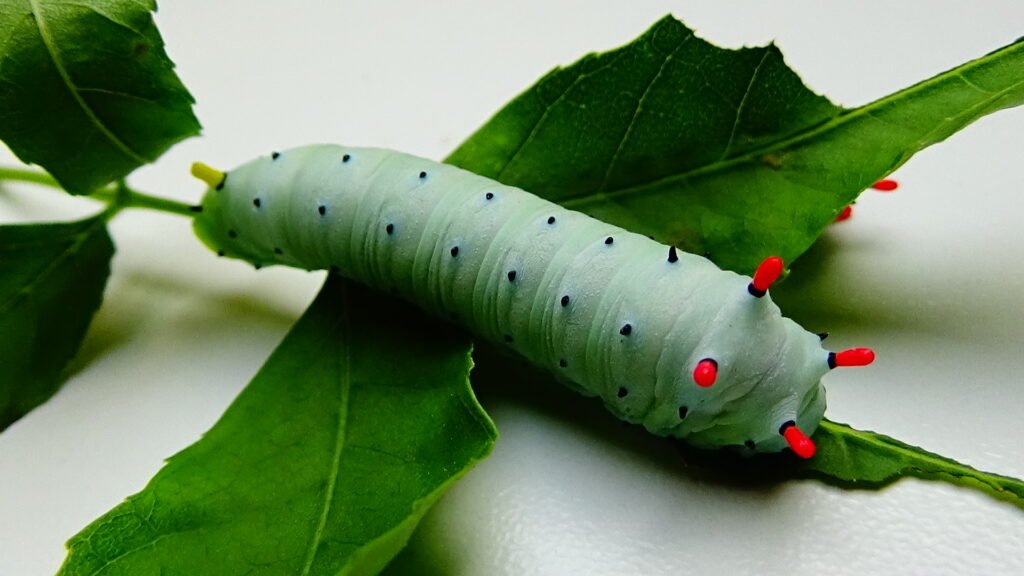
Caterpillars pupate by wrapping themselves in a leaf, where they spin a cocoon, enveloping the entire leaf stalk and attaching to a branch. As the leaves fall, this helps them blend in, looking like an ordinary dry leaf, which serves as protection from potential predators. Therefore, I would recommend hanging the cocoons during the wintering of this species and subsequent hatching.
We can overwinter the cocoons outside just like other species from Canada or the USA. It is good to occasionally mist the cocoons, but not directly, especially just before hatching.
Moths start to emerge in the wild in the months of May and June or sooner if warm. Populations in the south that have two generations hatch in March and April, and the next generation in August.
Mating is best carried out in well-ventilated conditions, for example in a mesh enclosure that can be placed outside during a warm evening, or indoors near an open window.
